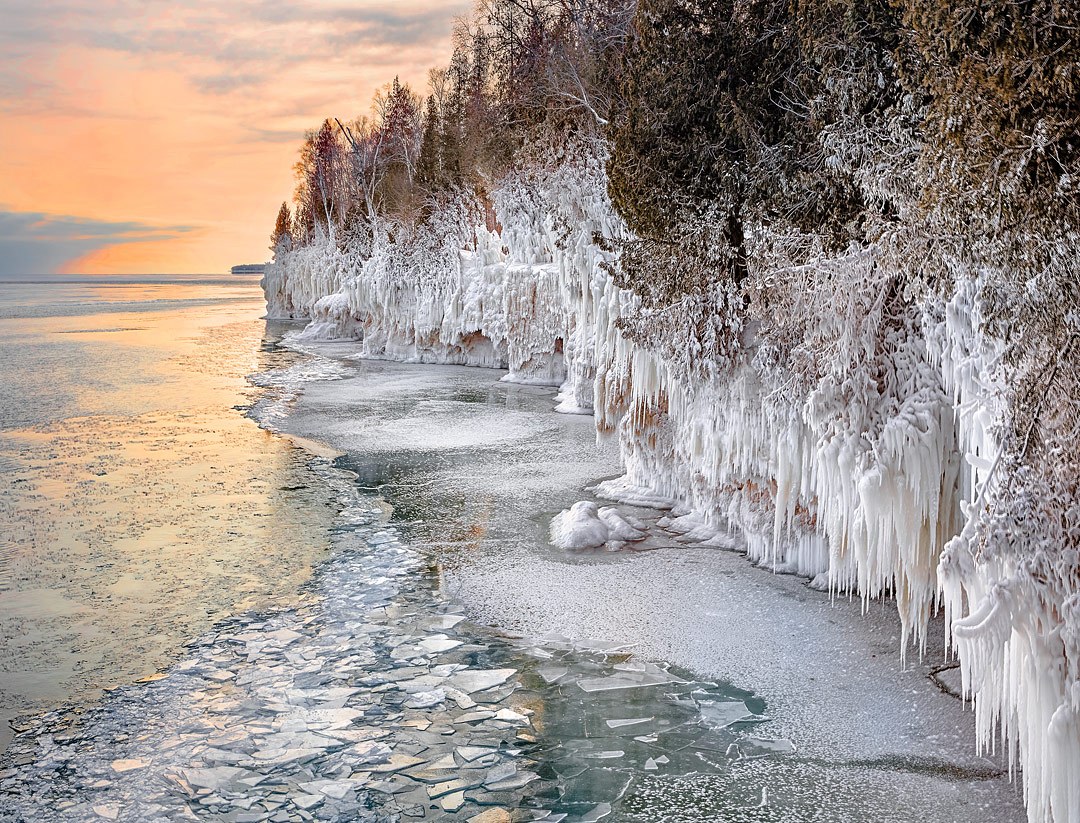I feel fortunate to live in Wisconsin, at the tip of an 80-mile-long peninsula that extends into Lake Michigan. There are wonderful photographic opportunities in every season, but my favorite time is winter. However, photographing during this season can be challenging, and this image exemplifies that.
This photograph features a series of low bluffs on the east side of the peninsula, which are open to Lake Michigan. Under certain conditions—specifically, very low temperatures combined with a strong onshore wind—the heavy spray from the waves freezes upon contact with the trees and bluffs, creating a stunning tapestry of ice.
The day after the onshore wind subsided, I went to the bluffs at sunset to see the aftermath of the storm. It is extremely dangerous to be on the edges of these bluffs without crampons, as slippery ice has led to recent fatalities. With crampons, however, it is safe, and I try to visit this spot whenever I believe the conditions may be favorable for ice formations.
One of the most wonderful aspects of winter in this area is that each visit brings something entirely new; conditions can change dramatically, even within just a few hours. For instance, on one visit, there may be open water near the bluffs, while during the next visit, it could be solid ice pack extending several hundred yards into the lake, only to have a sudden wind shift break up the ice and push the pack away within an hour.
While sunrise is typically the most optimal time to photograph this area, since it faces east, I decided to visit at sunset on this occasion. I was pleasantly surprised by how beautiful the light turned out to be.


